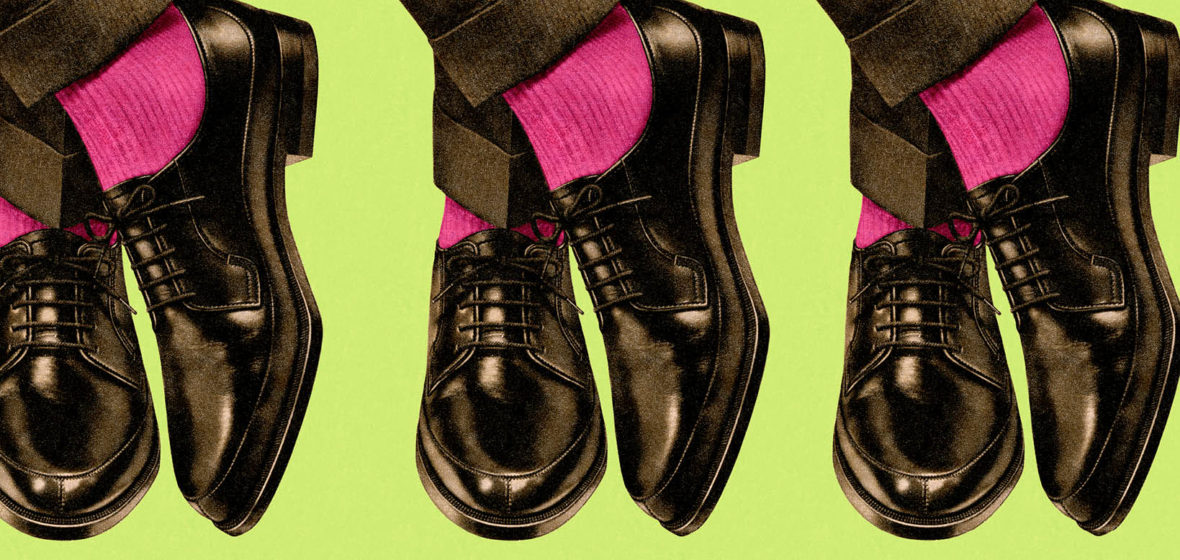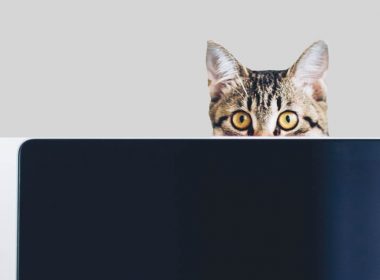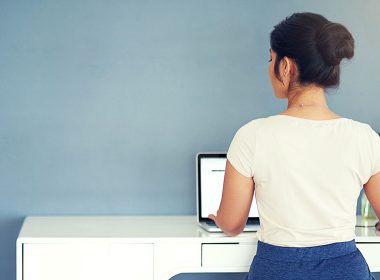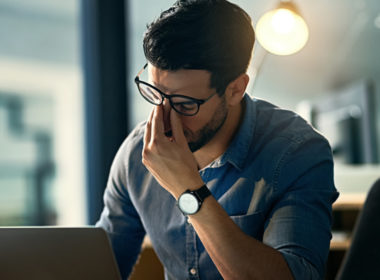Lockdowns and working from home have transformed office dress codes. Experts say output, comfort and individual choice now matter more than chic tailoring and uniform aesthetics for lawyers of the post-pandemic future.
It’s an average day in the office for Malcolm Gittoes-Caesar, a family lawyer and Principal at Coleman Greig Lawyers in western Sydney.
“Today I have no clients, so I’ve got a pair of casual shoes on, a pair of pants that aren’t quite cargos and aren’t quite jeans, and a blue polo shirt,” he says. “Everyone in my office – I’ve seen three principals all the way down to first-year legal cadets – is dressed casually. The only person I’ve seen in a suit was a guy that had court, and he brought a change of clothes.”
Since the firm’s 140 staff returned to its five offices across Western Sydney post the 2021 state-wide lockdown, there has been widespread acceptance of a new directive to “dress for your day”, explains Gittoes-Caesar. “If you’re going to court, then obviously you have to wear a suit and tie because they’re the rules,” he says. “But if you’re working behind the scenes, then, within reason, wear what you want, as long it’s still appropriate professional clothing.”
The shift is transformational. Pre-pandemic, Gittoes-Caesar says there was one casual Friday each month. The rest of the time, staff were expected to don corporate wear – suits, ties, high heels and freshly ironed shirts.
Most startling of all is that Coleman Greig Lawyers is no outlier. Legal firms across the country are relaxing dress codes to an extent that was unthinkable just two years ago. The pandemic has accelerated a long-standing discussion about the relevance of corporate wear; but for a conservative industry with deep roots in the upper classes, allowing more casual clothes in the office represents a major change to what it means to be a lawyer in modern Australia.
Casualisation in context
Global firm Clyde & Co has adopted a similarly relaxed approach at its offices in Sydney, Melbourne, Brisbane and Perth, says managing partner Michael Tooma.
“We encourage everyone to dress for the day ahead. This means that how our staff dress may vary significantly between days, depending on what their schedule looks like and the internal and external meetings they may have.”
Crucially, he says, there isn’t much need for a formal dress code: “We trust our staff to make a judgment call on what is appropriate.”
It seems obvious that many months working from home in activewear, pyjamas, a particular brand of locally made sheepskin boots, and the infamous “Zoom shirt” (according to Urban Dictionary, ”a clean shirt or blouse that’s kept on the back of your desk chair to quickly be presentable for video conferences”) are responsible for much of the shift towards more casual office wear.
“During long periods of working from home dress codes relaxed significantly, and with staff returning to the office we are finding a new balance between traditional corporate wear and more relaxed attire,” Tooma says.
During long periods of working from home dress codes relaxed significantly, and with staff returning to the office we are finding a new balance between traditional corporate wear and more relaxed attire.
– MICHAEL TOOMA, Managing Partner, Clyde & Co Australia
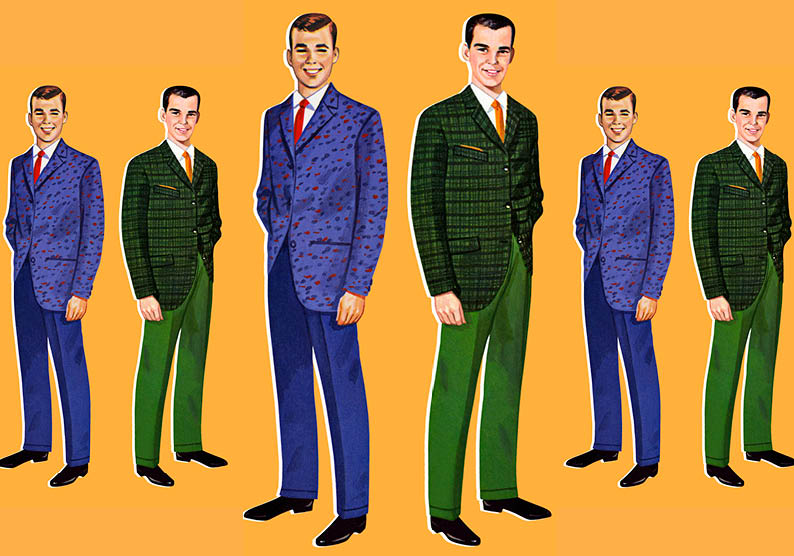
Lorinda Cramer, a postdoctoral researcher at Australian Catholic University working on a project that examines the social and cultural history of men’s clothing in twentieth-century Australia, says previous periods of global upheaval served as similar catalysts for sartorial change.
“After World War I and World War II, there were the same calls for more casual clothing.”
Importantly, she says, these shifts, as well as the one that occurred in home offices and kitchen tables during the pandemic, hastened an existing phenomenon: the casualisation of the clothes we wear to work.
There were calls for “dress reform” from the early twentieth century, and men’s dress gradually evolved from itchy, woollen three-piece suits to lighter fabrics and brighter colours. By the 1960s and 1970s, workplace attire relaxed to accommodate short sleeves and big collars, and in the early 21st century, many workplaces introduced even more relaxed dress codes and initiatives like casual Fridays.
“Office settings were increasingly casualising, and these shifting sands spread even further in the last 10 years,” Cramer says. “The pandemic absolutely accelerated what was already in motion.”
It’s a similar story in women’s fashion, says Nicole Vine, a personal stylist specialising in female business leaders and a former to-tier lawyer herself.
“In the past 20 years or so, we’ve seen a move away from corporate wear. I was finding lots of my clients didn’t necessarily need that corporate suit look anymore, and COVID has just brought it home completely.”
A paradigm shift
Casualisation of office wear is occurring across the corporate sphere, but the shift is particularly marked in law – an industry born of the upper echelons where formal attire came to represent an almost revered sense of justice and professionalism.
“I think lawyers would have always been in suit and ties but for [the pandemic], I really do,” Gittoes-Caesar says. “It has been a real paradigm shift, there’s no question. In terms of my organisation, we may have gotten there in five to 10 years, but instead the change has happened in just 18 months.”
He puts it down to an attitudinal shift in what the industry perceives as professional. Where once suits, ties and heels were shorthand for competence and expertise, these days how well a lawyer does their job is assessed on a wider range of nuanced criteria.
“We’re moving away from perceiving lawyers as stuffed shirts – that if they don’t wear a suit and tie, they’re not competent,” Gittoes-Caesar says.
Stephen Wigley, Associate Dean of Fashion Enterprise at RMIT University, agrees that a more nuanced understanding of professionalism has emerged from the pandemic.
“We’re living in a postmodern, meta kind of world where many of us understand that just because someone is wearing a pinstripe suit doesn’t mean that they’re necessarily professional.”
He points to other prestige industries like advertising that have successfully embraced more casual dress codes.
“We can see things evolving in terms of lawyers beginning to understand that there has to be a little bit more substance to what they do and the service that they offer their clients beyond simply looking the part,” Wigley says.
Indeed, Cramer says the focus is much more on what lawyers can do rather than how they look while they’re doing it.
“Increasingly, people have started to judge performance on what we’re able to produce, it’s not so much about that first impression of how we look.”
She says much of the change comes from not only seeing yourself working from home in casual clothes and maintaining high professional standards of work, but watching colleagues, senior managers and clients do the same.
“When we see them on a Zoom call, we can often see the background and their dog barking and somebody walking past with a vacuum cleaner,” Cramer says. “It’s a completely different setting to how we have seen our colleagues and our bosses in the past, which was probably completely confined to the workplace.”
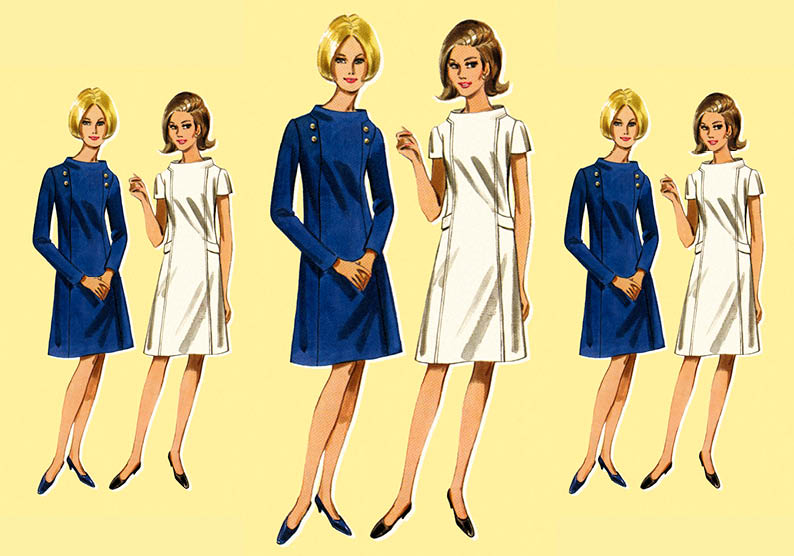
Your authentic self
But that’s not to say personal pride in appearance has faded in favour of a one-eyed focus on professional output and a permanent embrace of the “lockdown look” of elasticated waists and comfortable footwear. Experts point to a desire for authenticity in the push towards casual office wear. While it might sound like an annoying and overused buzzword, what it looks like in reality is diverse sartorial choices that reflect who we are as people.
“Authenticity is really important,” Wigley says. “In the past, authenticity was very much bound up in the clothes someone wore that suited their social position or their profession, whereas now we’ve reached a point where, for better or for worse, those sorts of stereotypes aren’t necessarily the case anymore. There’s relaxation of attitudes in terms of how we expect other people to appear and how we should appear ourselves.”
Vine says authenticity is clearly articulated in her clients’ preference to express personal style and develop something of a personal brand through what they wear – especially in law.
“For the sake of confidence and wellbeing, professionals are looking to have wardrobes that really reflect them as people but are created in a way that is very effortless, so they don’t have to wear full corporate battle gear all the time,” she says.
“We are now much more at ease with bringing our sense of self to the table.”
So important is providing space for this authentic self to flourish that Tooma from Clyde & Co says it can impact a firm’s attractiveness as an employer.
“The industry has changed, and staff have demonstrated that they can be effective and efficient working flexibly,” he says. “We are at a point where any employer of choice needs to provide flexibility not just in terms of place of work and hours, but also when it comes to dress code.”
Gittoes-Caesar agrees the shift is so advanced and significant that dress codes can have an impact on employee productivity and retention.
“It’s not necessarily about ‘I can wear casual clothes’, it’s about ‘I work for a progressive organisation’ and ‘I work for a company that cares about my comfort and wants me to be relaxed’,” he says.
“It’s not just wearing a pair of casual pants, it’s what it represents.”
No going back
There is some suggestion that as many firms embrace hybrid work – a combination of working on site and remotely – some professionals may embrace a more formal office look to delineate work from home.
Wigley says some fashion brands are reporting an uptick in sales of dressy office wear, while Vine has seen women show “hunger to dress up again and feel good about themselves again”.
But most experts agree that wearing crisp suits five days a week is about as relevant in a post-pandemic future as short business trips overseas and hot desking.
“There has been a fundamental shift in perception, and I don’t imagine going back to where we were before the pandemic,” Tooma says.
“The pandemic has changed how we work as well as how we dress in a lasting way.”
Cramer says office wear may even adjust to accommodate our penchant for comfort: “We might start to see looser tailoring and lighter and more stretchy fabrics in our professional business dress, but perhaps mix them with more conventional fabric choices, it’s going to be fascinating.”
Ultimately, relaxed dress codes and the more nuanced messages they send about what it means to be a legal professional are here to stay.
“Once expectations have changed, it’s very hard to change them back,” Gittoes-Caesar says.
“This is what being a lawyer looks like now.”

